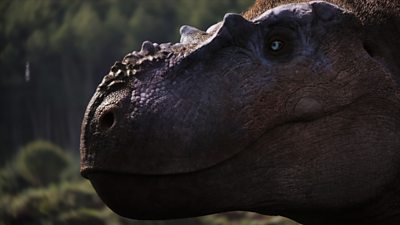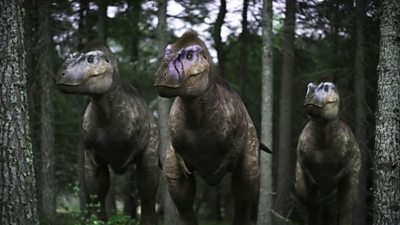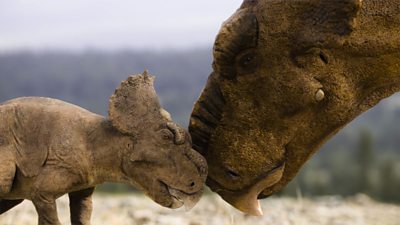
����ý Factual has released three first look pictures from the forthcoming ����ý One and iPlayer series Walking With Dinosaurs, due to air later this year.
More than 25 years after it first stomped across our TV screens, the iconic Walking With Dinosaurs is returning in a major new ����ý Studios production for the ����ý and PBS, co-produced with ZDF and France Télévisions. This new six-part series will take viewers on a unique journey back through time, revealing the incredible life stories of these long-lost giants.
In an exciting reimagining of one of the ����ý’s best loved factual shows, each episode of Walking With Dinosaurs tells the dramatic story of an individual dinosaur whose remains are currently being unearthed by world- leading dinosaur hunters. Thanks to cutting-edge science, experts can work out how these prehistoric creatures lived, hunted, fought and died more accurately than ever before. As the dinosaurs’ bones emerge from the ground, the series brings these prehistoric stories to life with state-of-the-art visual effects - making each episode a gripping dinosaur drama based on the very latest evidence.

Albertosaurus is a smaller, but just as deadly, relative of T. rex. Young Albertosaurus were capable of reaching speeds of up to 30 miles an hour, the fastest animal in Walking With Dinosaurs. Palaeontologists believe they hunted their prey in packs before devouring them with their dozens of large, sharp teeth.
Many dinosaurs are now known to have feathers. Our Albertosaurus has fur-like feathers, something we can infer thanks to fossil evidence of related species preserving these details perfectly.

Closely related to Triceratops, Pachyrhinosaurus is a plant-eater with a thick slab of keratin covered bone over its nose, known as a boss, used for combat between males.
There are three known species of Pachyrhinosaurus. Our species is Pachyrhinosaurus lakustai, which possesses a unique singular horn projecting from the centre of its head – informally known as the ‘unicorn’ horn. 73 million years ago, mega herds as big as 40,000 Pachyrhinosaurs could have embarked on epic migrations over hundreds of miles in search of food and nesting grounds, much like caribou do today.
Walking With Dinosaurs, a 6x50’, was commissioned for ����ý One and ����ý iPlayer by Jack Bootle, Head of Commissioning, Specialist Factual. Bill Gardner is Editorial Consultant for PBS. Diana El-Osta is the Executive in Charge for PBS. It is a ����ý Studios Science Unit Production co-produced with ZDF and France Télévisions for ����ý and PBS. The Executive Producers are Andrew Cohen and Helen Thomas; the Showrunner is Kirsty Wilson; the Producer/Directors are Stephen Cooter; Tom Hewitson and Owen Gower; and the Line Producers are Max Brunold and Libby Hand. The ����ý Commissioning Editor is Tom Coveney. ����ý Studios is handling global distribution.
AJ2